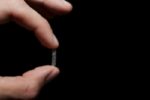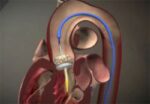Original title: Emerging indications, in-hospital and long-term outcome of balloon aortic valvuloplasty in the transcatheter aortic valve implantation era. Reference: Francesco Saia et al. EuroIntervention 2013;8:1388-1397 Until a few years ago, aortic valvuloplasty had been abandoned by many centers due to its limited results and frequent complications. The current guidelines recommend aortic valvuloplasty to treat patients with symptomatic<a href="https://solaci.org/en/2013/05/21/n-2752/" title="Read more" >...</a>
Safety and superior effectiveness over two years in femoropopliteal region with drug-eluting stents
Original title: Sustained safety and effectiveness of paclitaxel-eluting stents for femoropopliteal lesions: two-year follow-up from the Zilver PTX randomized and single-arm clinical studies. Reference: Michael D. Dake et al. J Am Coll Cardiol 2013. Article in press. Studies with long-term monitoring showed mainly the limited permeability of balloon angioplasty, especially over challenging injuries such as total occlusions or<a href="https://solaci.org/en/2013/05/13/n-2731/" title="Read more" >...</a>
Coronary Obstruction after TAVI: dreaded, but rare and solvable
Original title: Coronary Obstruction After Transcatheter Aortic Valve Implantation. A Systematic Review. Reference: Henrique Barbosa Ribeiro et al. J Am Coll Cardiol Intv 2013. Article in press. In the context of Transcatheter Aortic Valve Implantation (TAVI) there can be complications such as conduction disturbances, bleeding, residual aortic insufficiency or vascular complications, all of which have been detailed with<a href="https://solaci.org/en/2013/04/30/n-2920/" title="Read more" >...</a>
The Instantaneous Wave-Free Ratio is Equivalent to Fractional Flow Reserve and does not require adenosine.
Original title: Diagnostic Classification of the Instantaneous Wave-Free Ratio Is Equivalent to Fractional Flow Reserve and Is Not Improved With Adenosine Administration. Results of CLARIFY (Classification Accuracy of Pressure-Only Ratios Against Indices Using Flow Study. Reference: Sayan Sen et al. J Am Coll Cardiol 2013;61:1409–20. When considering revascularization, measuring lesion functional compromise is known to improve clinical outcomes<a href="https://solaci.org/en/2013/04/24/n-2906/" title="Read more" >...</a>
Colchicine could reduce restenosis in diabetic patients treated with BMS
Original title: Colchicine Treatment for the Prevention of Bare-Metal Stent Restenosis in Diabetic Patients. Reference: Spyridon Deftereos et al. J Am Coll Cardiol 2013;61:1679–85. In stent restenosis is more frequent in diabetic patients, who therefore find DES particularly beneficial. However, there is a subset of these patients with contraindication to prolonged double antiaggregation, due to a programmed surgery<a href="https://solaci.org/en/2013/04/23/n-2885/" title="Read more" >...</a>
More evidence for drug eluting balloons in the femoropopliteal region
Original title: 2-Year Results of Paclitaxel-Eluting Balloons for Femoropopliteal Artery Disease. Evidence From a Multicenter Registry. Reference: Antonio Micari et al. J Am Coll Cardiol Intv 2013;6:282–9. Paclitaxel-eluting balloons appear safe and effective for treating atherosclerotic lesions in the femoropopliteal region, leaving the stent only as a rescue strategy against a suboptimal outcome. However, the vast majority of<a href="https://solaci.org/en/2013/04/20/n-2878/" title="Read more" >...</a>
Endovascular Therapy in Acute Stroke Still Being Discussed
Original title: Mechanical Recanalization with Flow Restoration in Acute Ischemic Stroke. The Mechanical Recanalization with Flow Restoration in Acute Ischemic Stroke (ReFlow) Study. Reference: Christian Roth et al. J Am Coll Cardiol Intv 2013. Article in press. The intravenous tissue-type plasminogen activator (tPA) has proved to reduce morbidity and mortality in patients with acute ischemic stroke. In the<a href="https://solaci.org/en/2013/04/18/n-2864/" title="Read more" >...</a>
First results of bioabsorbable metal scaffolds DREAMS
Original title: Safety and performance of the drug-eluting absorbable metal scaffold (DREAMS) in patients with de-novo coronary lesions: 12 month results of the prospective, multicentre, first-in-man BIOSOLVE-I trial. Reference: Michael Haude et al. Lancet 2013; 381: 836–44. Bioabsorbable scaffolds could improve vasomotion, remodelling and facilitate new interventions, both percutaneous and surgical. This new bioabsorbable scaffold, different from the<a href="https://solaci.org/en/2013/04/18/n-2871/" title="Read more" >...</a>
5 Year Follow Up Outcome of Zotarolimus Eluting Stent
Original title: The “Final” 5-Year Follow-Up From the ENDEAVOR IV Trial Comparing a Zotarolimus-Eluting Stent With a Paclitaxel-Eluting Stent. ENDEAVOR IV Investigators Reference: Ajay J. Kirtane et al. J Am Coll Cardiol Intv 2013. Article in press. The ENDEAVOR IV was a randomized controlled study with a noninferiority design that compared the Endeavor zotarolimus eluting stent (Medtronic, Santa<a href="https://solaci.org/en/2013/04/12/n-2850/" title="Read more" >...</a>
IVUS improves outcomes in long lesions with DES
Original title: Randomized Comparison of Clinical Outcomes between Intravascular Ultrasound and Angiography-Guided Drug-Eluting Stent Implantation for Long Coronary Artery Stenosis. Reference: Jung-Sun Kim et al. J Am Coll Cardiol Intv 2013. Article in press. Treating long lesions is difficult and the chance of instant thrombosis may be higher in these lesions. Coronary intravascular ultrasound (IVUS) can help in<a href="https://solaci.org/en/2013/04/11/n-2843/" title="Read more" >...</a>









